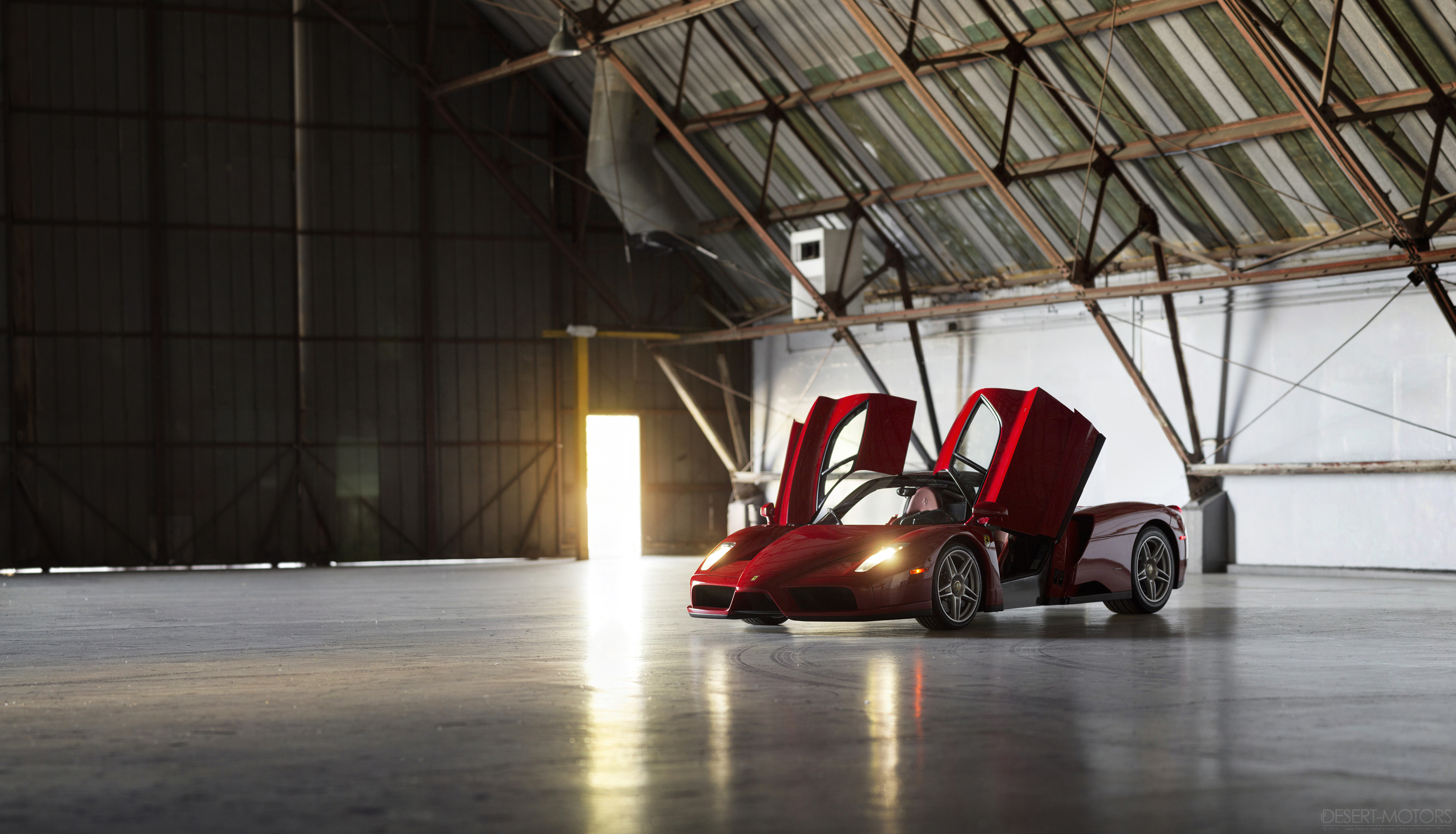2004 Enzo Ferrari
At the Paris Auto Show in September 2002, the world waited for the successor to the Ferrari F50 with anxious anticipation. The introduction of a Ferrari supercar was something that happened approximately every 10 years, and the car that emerged from under that red car cover would certainly set the bar for performance cars for years to come. The company was in excellent shape, as it was just two Formula One Grands Prix away from securing another World Championship, and they were selling more cars than they ever had before. The car they were about to introduce would prove to be the “icing on the cake” of a wonderful year.

Instead of continuing with tradition and naming this car F60, Chairman Luca di Montezemolo declared that it had been decided to name the car after the company’s late founder, Mr. Enzo Ferrari. It seemed fitting to name the car in memory of the company’s legendary founder, who never wavered in his commitment to racing, particularly Formula One. The Ferrari Enzo was primarily designed by Ken Okuyama of Pininfarina with the thought in mind of being able to offer a select group of wealthy and dedicated Ferrari owners the opportunity to have close to Formula One performance in their latest ultra-light, mid-engined two-seater supercar.
At its core, the resulting supercar can be likened to Michael Schumacher’s championship-winning F1 car with a sports car body. The spec sheet certainly reads like that of an F1 car, with a carbon fiber chassis, carbon-ceramic disc brakes at all four corners and a another nod to Formula One technology; a six-speed sequential F1-style gearbox that was capable of shifting gears in 150 milliseconds. Pininfarina highlighted the Enzo’s F1 heritage by incorporating a pronounced nose and giant rear air diffusers. The aerodynamic package, including computer-controlled adaptive aerodynamics, was so effective that unprecedented levels of grip were achieved with minimal drag penalties.

The 5,998 cubic centimeter V-12 is an exemplar of engineering genius, producing 660 brake horsepower and 484 foot-pounds of torque. In contemporary tests, Road & Track magazine noted that the Enzo recorded the best acceleration figures ever for a production road car, with 0– to 60-mph in 3.3 seconds and the quarter-mile in 11.1 seconds at 133-mph. Testers also marveled at the Brembo-developed, race-bred braking system, and their best 188-foot stop from 80-mph was another record. Yet another best was the 73-mph run through the slalom and an amazing skidpad reading of 1.01-G of lateral acceleration. Other road testers indicated a staggering top speed of 218-mph.
Even to the casual onlooker, it was clear that the Enzo was vastly different from its predecessor. The car was inspired both cosmetically and mechanically from Ferrari’s experiences in Formula One. Engineers spent countless hours sculpting the car’s shape in a wind tunnel to ensure that form followed function and that nothing compromised the cars available down force. The theme was similar inside, as there was nothing to distract the driver from the task at hand: driving. The interior was filled with carbon fiber, and the only luxury, aside from the leather bucket seats, was a climate-control system. Not even a radio was present, as it would add unnecessary weight and mask the glorious sound of the 12-cylinder engine sitting just inches behind the passenger compartment.

Production was very limited and only existing Ferrari owners were invited to buy one; these invitations were generally directed towards the buyers of the previous F50 and F40 models. Just 349 cars were originally planned, all of which sold before production began. Later, after numerous requests, 50 more cars were made, bringing the total to 399, a 400th Enzo was built to be presented to Pope John Paul II, and it was later auctioned for charity on his behalf. The car continues to be seen as the “Ultimate Ferrari” and to hold its value, remaining the most sought-after of all modern Prancing Horses from Maranello on the market today. The recent announcement of the La Ferrari ensures that Ferrari will continue to push the boundaries of technology for road cars as it, like the Enzo, gathers the greatest technical capabilities from both Formula One and GT engineering.

The Enzo offered is a sparingly driven example that was delivered in classic Rosso Corsa over black and red interior with red seat inserts, plus red dashboard and door panel accents. This is a factory European specification car that has been converted in California to conform to all California EPA, DOT and SMOG regulations. It is consequently legal for road registration in all 50 states of the Union. These cars are all-business in their performance, but do have a few passenger amenities, such as air conditioning, that will add pleasure to this racecar-like driving experience. The exterior is adorned with Scuderia Ferrari shields, factory alloy wheels and black brake calipers.
Ferraris have always stood proudly at the very top of the automotive food chain, and without doubt, the Enzo represents the highest-performing and most advanced model in the modern lineage of this storied marque. This car is outstanding in its cosmetic and mechanical condition, as might be expected of a car with proper care. Of the 400 Enzos built, however, an alarming number have succumbed to irreversible damage at the hands of inexperienced or cavalier drivers who, in following the Formula One inspired theme, have written their cars off.

In 2004, American magazine Sports Car International named the Enzo Ferrari number three on their list of Top Sports Cars of the 2000s. American magazine Motor Trend Classic named the Enzo as number four in their list of the ten “Greatest Ferraris of all time.” Unmolested and properly maintained examples such as this are therefore highly desirable and worthy of very close attention.
Click HERE to view the FULL GALLERY (43 Photos)
Photos by Patrick Ernzen courtesy of Auctions America






